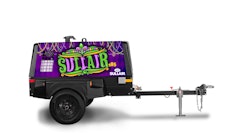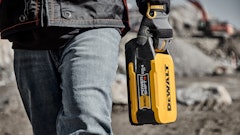
Let’s be honest—we’re all constantly looking for ways to do more with less in every area of our lives. That is especially applicable to the business world, where any inefficiency can have a significant impact on your company’s bottom line.
Here’s the good news: There are specific ways for those in the rental and construction industries to eliminate inefficiencies and get the absolute most out of their material handling equipment. Let’s explore three key ways you can optimize efficiency with your electric forklift fleets and do more with less.
Care For The Battery, Not Just The Forklift
When rental companies buy a fleet of forklifts, they naturally put together a schedule for planned maintenance to keep them in optimal shape and extend the life of the units. The unfortunate truth is the batteries in those units rarely get the same level of care, which can lead to a number of potential inefficiencies, including adding more units to your fleet, costly battery replacements or potential damage to the forklifts themselves.
We recommend that batteries be kept charged at over 40 percent and stored over 80 percent to maximize the useful life of the battery. We also recommend adding a separate planned maintenance schedule for the forklift batteries themselves so that they stay in optimal shape, are regularly watered (lead batteries) and properly charged.
The average utilization of forklifts on construction sites is quite low, and from our experience, certain batteries are more likely to experience premature failures on a construction site due to a lack of maintenance.
For example, in 2022, construction forklifts that have been retired or sold from one of our rental customers averaged only 264 hours of annual use. In other words, the forklifts may be unused for extended periods of time, which makes it easy to ignore the maintenance of those units. After all, the unit you can see appears in good shape and may have recently had planned maintenance. The problem lies in what you can’t see—the battery—which also needs to be maintained properly to perform, even when the forklift is not in use. Putting a planned maintenance plan in place for the batteries can make a huge difference.
Use Telemetry Data To Help
Investing in technology like telematics can also help the rental and construction industries do more with less. The data received from a telematics system can help reduce costs by allowing you to keep track of your fleet of forklifts and batteries and ensure they are being used in the right place and in the right way.
Again, for the construction industry, caring for the battery is of particular importance, so investing in a telematics system that allows you to remotely monitor battery performance and state of charge and diagnose and troubleshoot any issues to increase uptime can provide significant value. Additionally, a GPS component of telematics can help you identify optimal charging windows such as idle times or breaks.
Consider Creative Charge Stations
We understand that there is almost always a period of time where electricity is not yet available on a construction site, which makes charging batteries and ensuring they’re in their optimal zone of charge a complicated proposition.
Luckily, many battery manufacturers are developing portable and solar charging stations to solve this problem. These are not only great options for maintaining your forklift batteries and optimizing efficiency, but they are also environmentally friendly and allow for great versatility.
All in all, if you put a maintenance plan in place for your forklift batteries, consider investing in telematics and invest in solar charging stations, you can eliminate inefficiencies and optimize your business. We all want to do more with less, and these are three effective ways to achieve that.



























